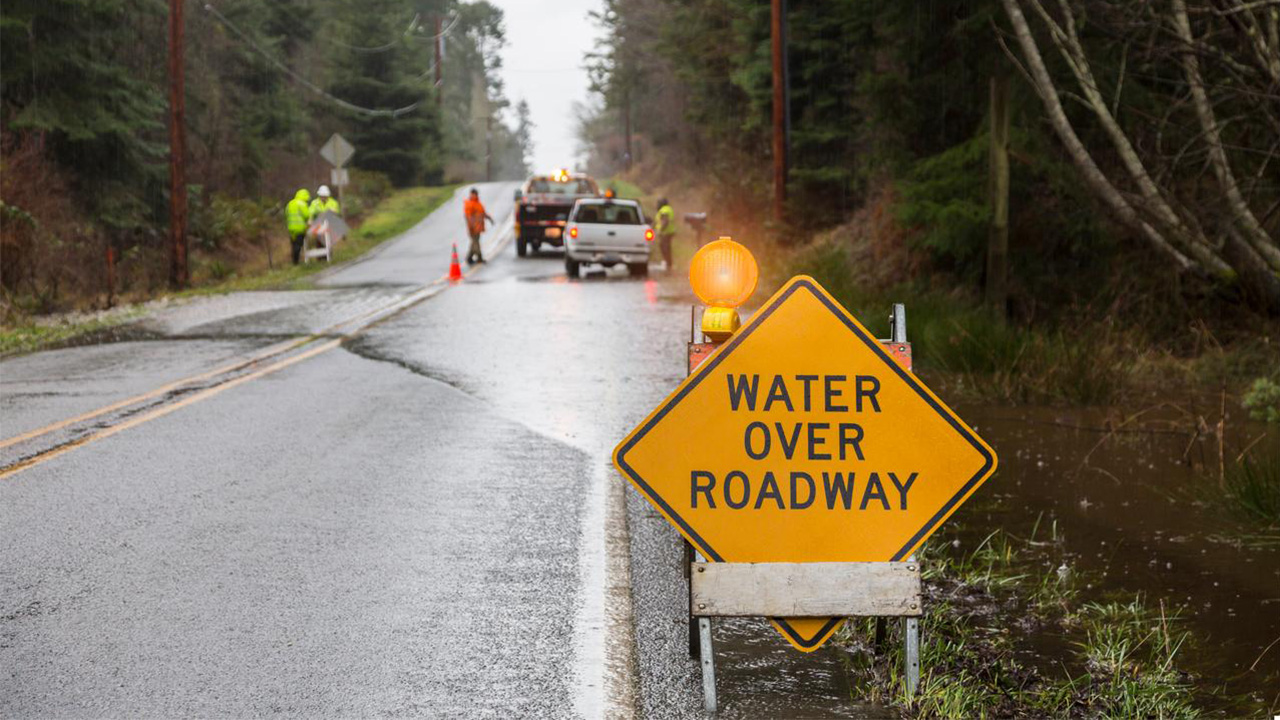By: Eric Telemaque

July 03, 2024 — Water damage on construction sites is a common challenge that can cause wide-ranging issues. Water intrusion at construction sites can be a result of heavy rainfall, flooding, plumbing failures, or inadequate site preparation and drainage systems. When water infiltration occurs, it can hinder progress, damage materials, compromise structural integrity, and create a hazardous working environment.
Common construction materials impacted by water damage
Wood. Prolonged exposure to moisture can cause wood to warm, swell, and rot.
Drywall. When damp or wet, drywall can lose its structural integrity.
Insulation. Insulation loses its effectiveness when wet, reducing energy efficiency and increasing heating and cooling costs.
Electrical systems. Electrical systems can be severely affected by water, leading to short circuits, electrical fires, or other safety hazards.
The replacement and repair of these materials can be costly and time-consuming, delaying project completion and increasing overall expenses.
Impacts on excavation and shoring
Water damage can also significantly affect excavations and shoring on construction sites, posing risks to both structural integrity and worker safety. Shoring is a critical component used to support excavations, trenches, or other structures during construction, preventing collapses and ensuring stability. Water intrusion can erode the soil around shoring systems, reducing the soil's ability to support the weight and pressure of the excavation. This erosion can lead to the collapse of trenches or excavations, endangering workers and equipment.
Mold growth
Mold growth is another significant issue associated with water damage on construction sites. Mold can develop and spread rapidly following water intrusion into building materials, causing potential health issues such as respiratory problems or allergic reactions for workers and future occupants. Addressing mold contamination requires thorough cleaning/disinfection and removing water-damaged materials, and in some cases, may require professional mold remediation services. While the federal government doesn't have regulations relating to licensure for firms and individuals executing mold assessments, several states have these requirements.
A look at New York mold regulations
New York State implemented mold regulations on January 1, 2016. Known as Article 32 of the New York State Labor Law, these regulations require assessment and remediation of mold in indoor environments. In addition, the City of New York has requirements regarding mold remediation outlined in the New York City Health Code, in Article 175. Those guidelines generally suggest:
- Assessing the extent of mold contamination and developing a remediation plan.
- Notifying involved parties.
- Performing remediation. The contractor should have microbial experience or certification and follow specific guidelines for containing, cleaning, and disposing of mold-contaminated materials.
- Performing a post remediation verification clearance inspection to ensure that the mold has been properly remediated.
Local Law 61 of 2018 established minimum standards for carrying out mold assessment, mold abatement, and mold remediation for buildings with 10 or more dwelling units or on a zoning lot that contains 25,000 or more square feet of nonresidential floor area.
The law also requires the person holding a mold remediation license to file a Mold Remediation Work Plan Notification form and a Mold Remediation Work Plan. The person holding a mold assessment license is required to file a Post-Remediation Assessment form and Mold Post-Remediation Certification.
The Department of Environmental Protection may issue fines from $800 to $10,000 if you fail to hire the appropriate licensed mold assessors to remediate mold and/or if the person holding a mold assessment license doesn't file the required Post-Remediation Assessment form and Mold Post-Remediation Certification.
What can be done to help mitigate water-damage risks?
To mitigate water-damage risks, construction sites must implement proactive measures. Proper site preparation, such as installing drainage systems, as well as temporary covers and shelters can protect exposed materials. Regular inspections and maintenance of plumbing and drainage systems are essential to detect and address potential leaks or blockages. Additionally, it may be prudent to develop a water-damage response plan where necessary, including quick water extraction and drying procedures, which can help minimize damage and facilitate a faster recovery process.
In conclusion, water damage on construction sites is a common and significant challenge that can have wide-ranging impacts. From hindering progress and damaging materials to compromising structural integrity and creating hazardous working conditions, water intrusion can cause delays, increase expenses, and pose risks to both workers and the overall project. The replacement and repair of water-damaged materials can be costly and time consuming, while the erosion of soil around shoring systems can lead to collapses and endanger workers. Additionally, mold growth resulting from water damage can have detrimental effects on both worker health and future occupants. To mitigate these risks, construction sites must prioritize proper site preparation, regular inspections and maintenance of plumbing and drainage systems, and the development of a comprehensive water-damage response plan. By taking proactive measures, construction sites can minimize the impact of water damage, ensure worker safety, and maintain project timelines and budgets.
Author

Eric Telemaque
Make Gallagher Bassett your dependable partner
When making the right decision at the right time is critical to minimize risk for your business, count on Gallagher Bassett's extensive experience and global network to deliver.
